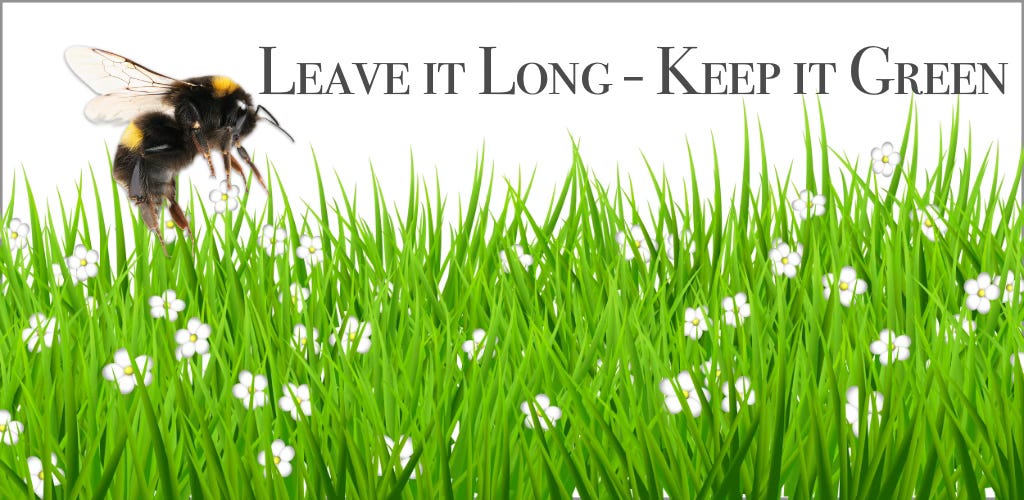“Leave it Long - Keep it Green”
Modifying "No-Mow May" for Canadian conditions - A BONUS article.
A gentle thought as May approaches. By now everyone must know about the “No-Mow May” movement and a good number of people in the town in which I live seem to have adopted it.
But there is a problem - the phrase "No-Mow May” is not ideal for the climatic zone in which I live - excellent as it is for getting the idea of native plants and pollinator gardening across to the public.
There is a difference between the native grassland species of the UK (where the scheme began) and those we have here in Quebec. Our spring starts a good few weeks behind that of northern Europe and it becomes rather easy for people to think they have done their bit for the environment once June arrives and go back to closely mowing their lawns … which often then become dry and brown in mid-summer drought. Rather than concentrating on flowers for pollinator insects in the (unmown) grass during one short month consider that OUR insects, with exceptions, rely more on tree pollen than lawn-flower pollen during May … our lawn-flowers come later towards June (and dandelions are not native here anyway).
For most people, lawns of some sort are here to stay even if some have (thankfully) also taken to growing small areas of native plants like milkweed, asters and golden rod alongside their lawns. I love my zero-lawn garden with its bees, butterflies and birds, but realistically, I know I am unusual in that.
I suggest there is a compromise. How about, rather than No-Mow May think “Leave it Long - Keep it Green” as our garden mantra, and keep it simple too. If you are not ready for the big replacement (or have dogs and kids that need space to run around in) then set the mower blades to maximum height (four inches or more if possible) for the whole summer period as that alone will make a big difference … plus the grass would be less susceptible to drought. If you use a lawn contractor, make sure they adhere to this, and - no compromise on this - ensure that herbicides and insecticides are never deployed. Plant some corners of milkweed, asters, coneflowers and golden rod as well, of course but it doesn’t have to be all or nothing.
https://magazine.scienceconnected.org/2020/01/intense-lawn-mowing-lowers-biodiversity-favors-pests/






Great article Richard - I have subscribed and look forward to what you share.
I am trying to create a native bee friendly lawn, with what little lawn we have now as most has gone to gardens for a mix of native plants and stuff I have grown for years being replaced when possible.. The native bee lawn will have native plants to our ecoregion (St Lawrence Lowlands) throughout it - already have a good start as we have never tried to have a carpet like lawn so things like wild strawberries and self-heal have grown into it...
Thank you Richard for sharing your knowledge and encouraging us to think green in doable ways💚